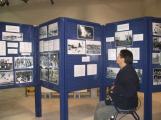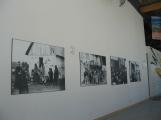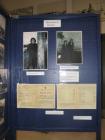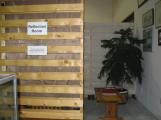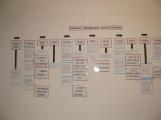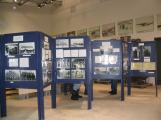1
From February 1 - March 31 2006 the Red Lake Regional Heritage Centre hosted "Where are the Children? Healing the Legacy of Residential Schools"This exhibition presented the history, experiences and stories of children in residential schools throughout Canada by means of archival photographs, historical documents and personal experiences.
Over 100 photographs from the National Archives of Canada, various church groups and other organizations, brings to reality the vulnerability of the children who were seen as uneducated, uncivilized savages by the churches and governmental officials who felt they had the duty to transform their wards into a civilized native race.
All First Nations, Metis and Inuit communities, urban and rural, have been affected in one way or another by the Residential school story.
We decided to focus our local exhibit "Residential Schools: The Red Lake Story", on the two residential schools that affected this community, McIntosh Indian Residential School and Pelican Lake Indian Residential School. The following photographs show various parts of our local exhibit including a timeline, a local story, photographs of McIntosh and Pelican Residential Schools and a Reflection Room.
We wanted to add as much as we could to the national story. Here are a few things we came up with.
We thought it was important to find out 'where are the children'. We therefore created a binder that was filled with photographs from McIntosh and Pelican that were sent to us from Nishnawbe Aski Nation. We encouraged people to put names to the faces they saw, as none of the photos sent to us were labeled. It was amazing the amount of information we were able to gather. People would just glance at some of the photos and tell us, 'that's my father, my uncle, or my sister'.
Another element we added to our local exhibit was a timeline. Although there were some dates scattered throughout the national exhibit, we wanted to include more.
We developed a timeline that ranged from the 1600s to the 1980s. It gave a good background as to the beginnings of these schools and we found it to be quite effective.
Many people commented that being able to read a timeline gave them more of a background about the history of residential schools.
We also gathered stories by residential school survivors and shared them with our visitors. Some included stories of children running away, success stories after residential school, significant experiences never shared before, or just thoughts, and feelings. These were very special and the Heritage Centre would like to thank everyone who contributed a story.
One final area that we created in our exhibit was a Reflection Room. We simply designated a small closed off area where our visitors were welcome to go if they needed some time alone. It was a special area that was respected by all. Each time we welcomed a new group of visitors we never knew how the exhibit including the photos they saw or the stories they read would affect them.
Residential Schools: The Red Lake Story was a wonderful success and we recieved many inquires about if it would travel.
So far the exhibit has travelled to Atikokan and Dryden. It opens September 2008 in Fort Frances.
